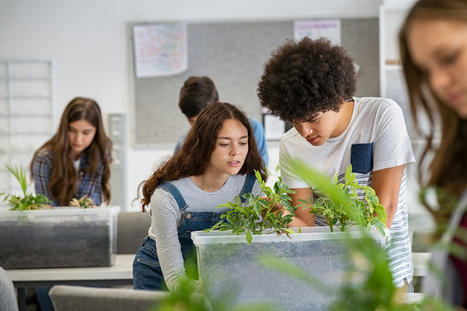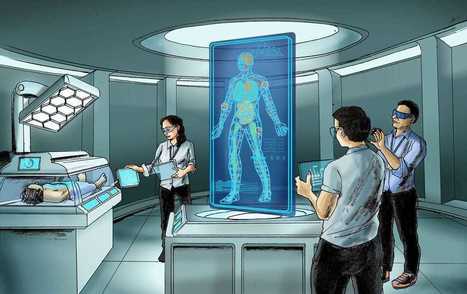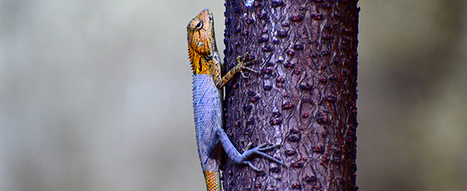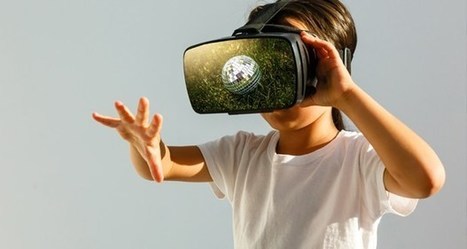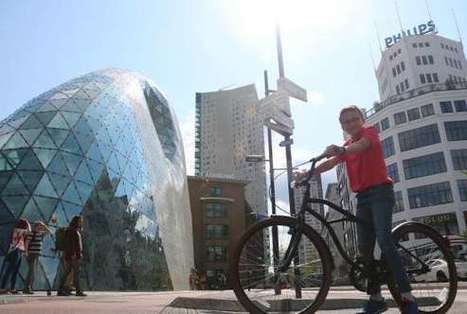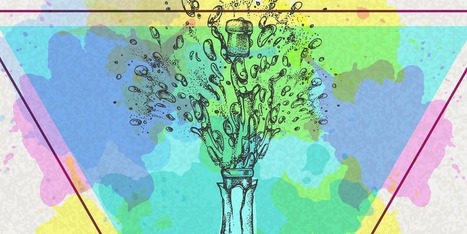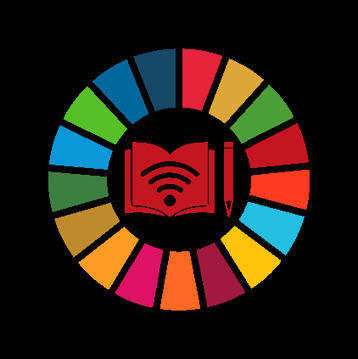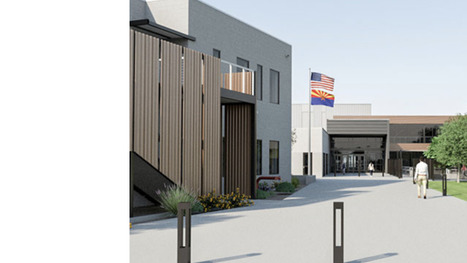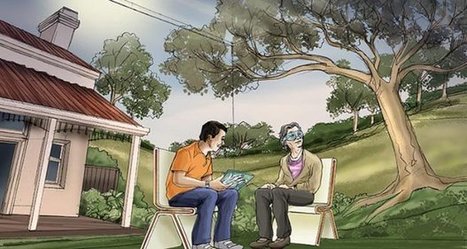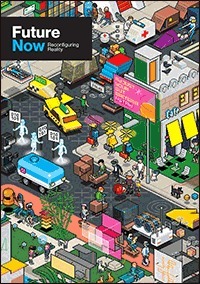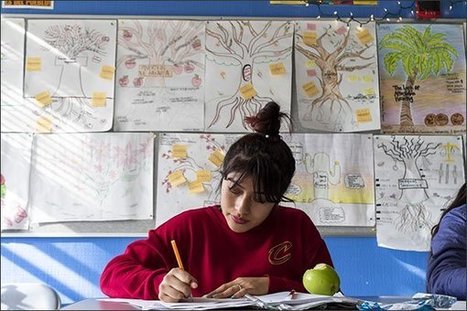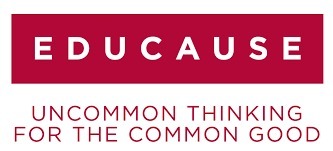 Your new post is loading...
 Your new post is loading...
The conventional model of schooling is outdated and overdue for replacement. As learners make their way through high school, survey results show that close to 66% end up disengaged. Those who successfully navigate the system gain a narrow set of academic skills that may or may not align with their individual needs, interests, and strengths. And as a side effect of conventional schooling, learners often form fixed mindsets about their abilities and see their value and identity through the narrow framing of academic ranking systems.
How can you push students to become more creative? It's not necessarily something that can be taught explicitly; however, it can become an implicit element in the activities you have students do. That was the topic for two researchers who concluded that mobile technology can enhance student learning and creativity if it's used appropriately.
The project, undertaken by Isa Jahnke, associate professor in the University of Missouri College of Education School of Information Science and Learning Technologies, and former doctoral student Julia Liebscher, interviewed 20 instructors in higher education in German-speaking countries and studied their course materials to find out how they were encouraging students to use mobile devices in their courses.
They found that student creativity was most enhanced by professors who allowed their students to work on "self-selected tasks," especially developing novel solutions through creation of learning apps.
What are the core competencies that faculty innovators need in order to be successful in making sustained changes in and beyond their classrooms? While sitting under the starry Arizona desert sky near Bioshphere 2 during an NSF-sponsored workshop focused on the intersections of STEM education; diversity, equity, and inclusion; and innovations in learning, we decided to bring this question to our colleagues working in higher education learning innovation.
A few weeks later, we gathered with colleagues at the bright new offices of Duke University Learning Innovation for a meeting of HAIL (Harvesting Academic Innovation for Learners). We used this opportunity to ask participants to respond to and reflect upon a list of seventeen competencies, which were developed with Research | Innovation | Scholarship | Education (RISE) at the University of Michigan Medical School. We later shared this list with the readers of Inside Higher Ed (IHE) and asked them to respond. The dialogue that developed yielded a range of insights.
Writing on work futures is generally in agreement about the major drivers of change, including technological change — artificial intelligence, robots and big data, as well as innovation in materials, propulsion and energy strategies, climate change, globalization, population pressures and changed demographic profiles. The implications for jobs are more vague, and futurists spread along a continuum stretching from predictions of dystopian futures to optimistic predictions of a better life for all.
The Design Futures Initiative is a nonprofit organization based in San Francisco, CA dedicated to the development and education of Futures Design Thinking —…
Individuals across higher education—administrators, faculty, architects, and others—increasingly recognize that physical classroom spaces need to be designed to better accommodate active learning. This means making classrooms more flexible in all aspects, including furniture, ways of sharing content, writing surfaces, and power sources. At Penn State, we believe that the professional development we design to support faculty in these spaces must be flexible as well.
For some faculty, this means finally having a space where they can engage students in the kinds of learning activities they've dreamed about or that they've attempted in more constrained traditional spaces. Others find themselves in flexible spaces and report wishing they'd had more notice to better prepare their instruction. Still others find themselves in newly designed rooms, differently appointed from those in which they're accustomed to teaching, unsure as to what to do.
In rethinking physical classroom spaces, scholars have long recommended that considerations include human-centered design, principles of learning, and diverse learning-focused technologies. More recently, the Learning Space Rating System is built on seven principles of learning space design, which describe the extent to which a given space promotes active learning.
"In spring 2018, Deep Center, thanks to an Educator Innovator mini-grant from the National Writing Project, piloted extended programming at one of Savannah’s most challenged public schools, Hubert Middle School.
"Deep Center’s mission is to empower Savannah’s young people to thrive as learners, community leaders, and agents of change. Through creative writing, cultural production, and art, Deep creates platforms for the city’s youth and the village of support around them, including their families and adult allies, to share stories, engage in debates, and make Savannah a more just and equitable place.
"In our workshop at Hubert, Deep Center used assets-based creative-writing, connected learning, multimodal exploration, and intergenerational community engagement to help young people connect their learning to their lives and their lives to their community.
"Deep and Hubert built from an existing partnership to expand and tailor programming to the school’s and neighborhood’s unique challenges and context. This expansion included a doubling of programming hours (meeting twice weekly for 11 weeks), replacing volunteer teaching artists with paid teaching artists, and more intentional engagement with the community around critical issues facing the surrounding neighborhoods that the youths called home. Final products were inclusion in a published book and a final performance.
"Immediately upon beginning the program, we realized our group of sixth graders needed a different program than the one we’d originally planned. Because of Deep’s grounding in a strong pedagogy and program plan, we were able to adapt our plan as our young people needed while remaining true to our pedagogical framework
Via Jim Lerman
As mobile computing becomes increasingly ubiquitous in the school system, educators, administrators and parents face a range of issues associated with its use by students, in and around the classroom. Here are a few of them:
Social media savvy
Integrating VR and AR into the curriculum
Teaching soft skills
Building a learning network
Building digital spaces
Managing students’ privacy
Managing technology smartly
Focus on innovation, not the product
Although AlphaZero has a clear goal, to win the game, it does not try to constantly replicate previous successes. Its strategy for winning is based on the systematic application of a learning method. In the same way, innovation in organisations often focuses on improving the product based on existing processes. Few companies consider to innovate in organisational processes and, in particular, in innovation processes. For example, the creative routines introduced at Pixar or Google allow the development of new products that would not have been possible with traditional methods.
Given the undisputable success of AlphaZero in board games, it could wrongly be interpreted that a machine will soon be able to make decisions like a human being. AlphaZero decision process is based on clear and stable rules of the game. In changing, ill-defined or uncertain environments, it would take a considerable amount of time to adapt itself. However, we can analyse its decision-making processes to better understand ours. The machine is no longer learning from humans, it is learning alone. Now, it is time for humans to learn from the machine.
High Tech Campus Eindhoven is the world's smartest square km and has the ultimate high tech startup ecosystem to start and accelerate your tech startup!
You know “that kid” when you meet them. That kid is often perceived as too loud, too opinionated, too energetic. That kid is called a troublemaker, a rule breaker, a misfit.
Are you creative? How would you know, or convince your boss? According to a new LinkedIn analysis of member profiles, creativity tops the chart of soft skills that employers are looking for.
A skill is loosely defined as the ability to do something well. The word traces back to Old Norse for “power of discernment.” In the early 13th century, the word was also used to describe one’s “sense of ability, cleverness.” Skills can also be taught, improved, measured and defined—and be done with some consistency and reliability.
Does creativity check those boxes? Is creativity a skill? Can it be honed through practice and repetition, in a similar fashion as, say, practicing shooting free throws? I posed this question in the office—and got a hung jury. Respondents to a Twitter poll leaned slightly in favor of “yes.”
I need to start with a disclaimer: the last 6 years of my life have been focussed on developing Mashauri: an education platform for universities to enable them to offer their students an entrepreneurial education — so I may have a slight bias here. On the other hand, the research we have conducted and the experience gained, have done nothing to dissuade me from this — although we have received some negatives from certain quarters (see later).
|
This Dashboard presents country commitments to transform education made at the occasion of the United Nations Transforming Education Summit in September 2022 and the actions undertaken since then.
The Summit was a historic event that elevated education to the top of political agendas at global, regional and country levels. Leading up to the Summit, 163 Member States convened national consultations and 141 countries* submitted their national statements of commitment to transform their education systems and invest in education (*as of September 2023).
The Dashboard aims to monitor countries’ actions undertaken against their national commitments (see Technical Note). It also facilitates cross-country learning and exchange of experiences and good practices in translating commitments into action, among all countries including those that have not submitted their statements of commitment. The commitments and actions are analyzed according to 9 overarching themes and 37 sub-themes, which represent the totality of commitments identified in countries’ statements.
Country actions will be collected and added to this Dashboard by early 2024, ahead of the Global Education Meeting.
In the media and in the education conference circuit, it’s almost impossible not to cross paths with three burgeoning issues in K-12 education: Equity, personalized learning, and social-emotional learning (SEL). Amidst the conversations on these hot topics, few bring up the idea of disruptive innovation. But Disruptive Innovation is a force that can unlock the potential of all three ideas to improve student outcomes. Here’s how.
1. Disruptive Innovation is the catalyst for more equitable access to high-touch tutors and mentors
2. Disruptive Innovation is the mechanism for creating a personalized education system.
3. Disruptive Innovation is the bridge for connecting SEL skills to authentic relationships.
A high school scheduled to open this month near Phoenix in Arizona is following what it's calling an "academy-based, career-pathway focused education." Eastmark High School, part of the Queen Creek Unified School District in Mesa, will feature next-generation educational spaces as well as athletic and arts programs.
They added that there have been few times in history when the future of work has been less like the past.
In the future, relationships are likely to be as important as what is produced and while “in the past, when you became something you were known as that type of worker, in the future people are likely to go on becoming new versions of themselves as they continuously learn new skills”.
This third volume of Future Now, IFTF's print magazine powered by our Future 50 Partnership, is a maker's guide to the Internet of Actions. Use this issue with its companion map and card game to anticipate possibilities, create opportunities, ward off challenges, and begin acting to reconfigure reality today.
Digital learning programs require educators that have diverse skills, spanning the technical and the pedagogical. We explore how organizations use various peer-to-peer professional learning approaches to foster cultures of inquiry and knowledge among their educators.
Like its predecessors, 5G enables more widespread adoption of the tools already available to course creators, instructional designers and administrators. That is, 5G is not a breakthrough design technology, it is a breakthrough support technology.
Here are ten examples of what 5G can do for learners. Many of the items on this list are possible in some locations now. The benefit of 5G is the underlying technology is both more reliable and (at least) 100x faster than current technology.
The origin of the use of the term “black swan” to characterize such events is interesting. Prior to 1697, any Western civilization has not observed any black swan. This gave rise to the notion that such creatures didn’t exist. Hence, the term became used to describe situations of impossibility. After a black swan was finally observed in western Australia in 1697, the notion was disproved. Since then, “black swan” describes situations where perceived impossibilities have been disproven and paradigms have been shattered.
This report outlines the potential of AI tools in schools and colleges, and charts a path for the future that maximises the benefits and minimises the risks.
There are three categories of AIEd tool being used in schools and colleges today: learner-facing (eg adaptive learning platforms), teacher-facing (eg automated assessment tools, or advanced teacher dashboards) and system-facing (eg analysing data from across schools to predict school inspection performance).
Educators in Oakland, Calif., say the yearlong graduation projects are helping students master oral, writing, and research skills that will serve them well for whatever comes next.
7 Ways to Get the Most Out of Your Membership
EDUCAUSE members—get the most out of your membership by following the steps below.*
Tailor your member experience.
Get familiar with your benefits.
Find solutions to everyday work problems and projects.
Join the conversation.
Build peer networks and advance your knowledge.
Be recognized and advance your career.
Learn and shape the higher education perspective on national issues and trends.
In a 2017 study by Harvard scholar David J Deming (which you can read here), he found that, despite advances in technology, the need in our economy for skills requiring “soft skills” is going up (not down).
Here’s some of what he found:
“Analyzing employment trends between 1980 and 2012, Deming found that jobs requiring extensive interaction, such as teachers, managers, and nurses, grew by nearly 12 points as a share of the labor force, while analytical positions that required few social skills, including some engineering jobs, declined. Wages for “high math, low social skill” occupations increased by 5.9 percent, compared with 26 percent growth for “high math, high social skill” openings.”
(Via: The 74)
|



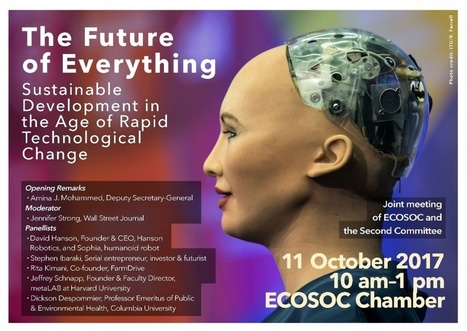


 Your new post is loading...
Your new post is loading...
